Idaho Youth Challenge Academy Spring ranks in the bottom 50% of all schools in Idaho for overall test scores (math proficiency is bottom 50%, and reading proficiency is bottom 50%).
The percentage of students achieving proficiency in math is ≤10% (which is lower than the Idaho state average of 42%). The percentage of students achieving proficiency in reading/language arts is 40-49% (which is lower than the Idaho state average of 55%).
Quick Stats (2025)
- School Type: Alternative school
- Grades: 9-12
- Graduation Rate: 30-39% (Btm 50% in ID)
- Overall Testing Rank: Bottom 50%
- Math Proficiency: ≤10% (Btm 50%)
- Reading Proficiency: 40-49% (Btm 50%)
- Science Proficiency: 20-29% (Btm 50%)
- Source: National Center for Education Statistics (NCES), ID Dept. of Education
School Overview
The teacher population of 2 teachers has grown by 100% over five school years.
School Type
Grades Offered
Grades 9-12
Total Students
n/a
Total Classroom Teachers
2 teachers
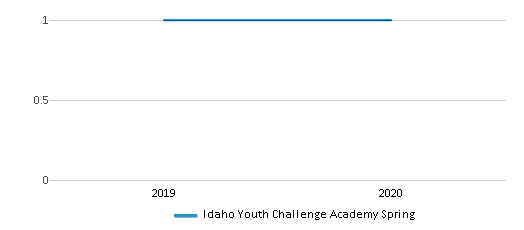
School Rankings
Idaho Youth Challenge Academy Spring ranks within the bottom 50% of all 709 schools in Idaho (based off of combined math and reading proficiency testing data).
Overall Testing Rank
#620 out of 709 schools
(Bottom 50%)
(Bottom 50%)
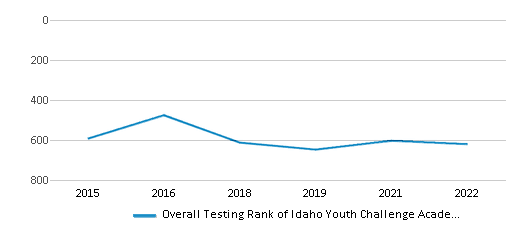
Math Test Scores (% Proficient)
≤10%
42%
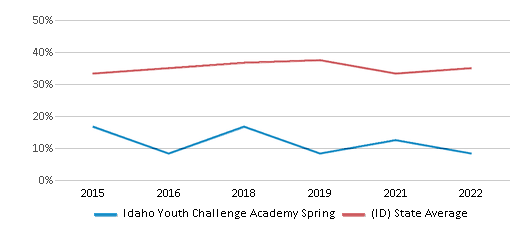
Reading/Language Arts Test Scores (% Proficient)
40-49%
55%
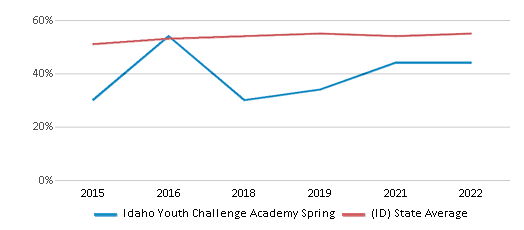
Science Test Scores (% Proficient)
20-29%
41%
Student : Teacher Ratio
n/a
17:1
Graduation Rate
30-39%
80%
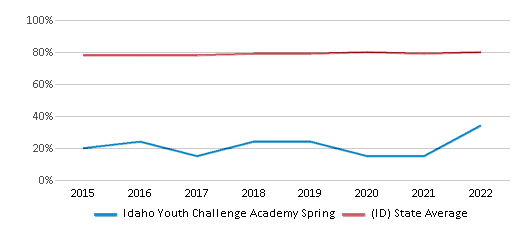
Participates in the National School Lunch Program (NSLP)
Yes
School Statewide Testing
School District Name
Source: National Center for Education Statistics (NCES), ID Dept. of Education
Frequently Asked Questions
What is Idaho Youth Challenge Academy Spring's ranking?
Idaho Youth Challenge Academy Spring is ranked #620 out of 709 schools, which ranks it among the bottom 50% of public schools in Idaho.
What schools are Idaho Youth Challenge Academy Spring often compared to?
Idaho Youth Challenge Academy Springis often viewed alongside schools like Ada County Juvenile Center, Crossroads Middle School, Timberline High School by visitors of our site.
What percent of students have achieved state testing proficiency in math and reading?
≤10% of students have achieved math proficiency (compared to the 42% ID state average), while 40-49% of students have achieved reading proficiency (compared to the 55% ID state average).
What is the graduation rate of Idaho Youth Challenge Academy Spring?
The graduation rate of Idaho Youth Challenge Academy Spring is 30-39%, which is lower than the Idaho state average of 80%.
What grades does Idaho Youth Challenge Academy Spring offer ?
Idaho Youth Challenge Academy Spring offers enrollment in grades 9-12
What school district is Idaho Youth Challenge Academy Spring part of?
Idaho Youth Challenge Academy Spring is part of Orofino Joint School District.
School Reviews
Review Idaho Youth Challenge Academy Spring. Reviews should be a few sentences in length. Please include any comments on:
- Quality of academic programs, teachers, and facilities
- Availability of music, art, sports and other extracurricular activities
Recent Articles

What Is A Charter School?
Explore the world of charter schools in this comprehensive guide. Learn about their history, how they operate, and the pros and cons of this educational innovation. Discover key facts about charter schools, including admission policies, demographics, and funding, as well as what to look for when considering a charter school for your child.
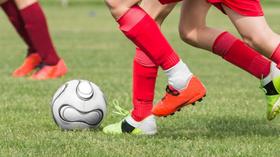
10 Reasons Why High School Sports Benefit Students
Discover the 10 compelling reasons why high school sports are beneficial for students. This comprehensive article explores how athletics enhance academic performance, foster personal growth, and develop crucial life skills. From improved fitness and time management to leadership development and community representation, learn why participating in high school sports can be a game-changer for students' overall success and well-being.
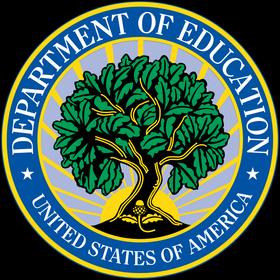
February 05, 2025
Understanding the U.S. Department of Education: Structure, Impact, and EvolutionWe explore how the Department of Education shapes American education, from its cabinet-level leadership to its impact on millions of students, written for general audiences seeking clarity on this vital institution.





